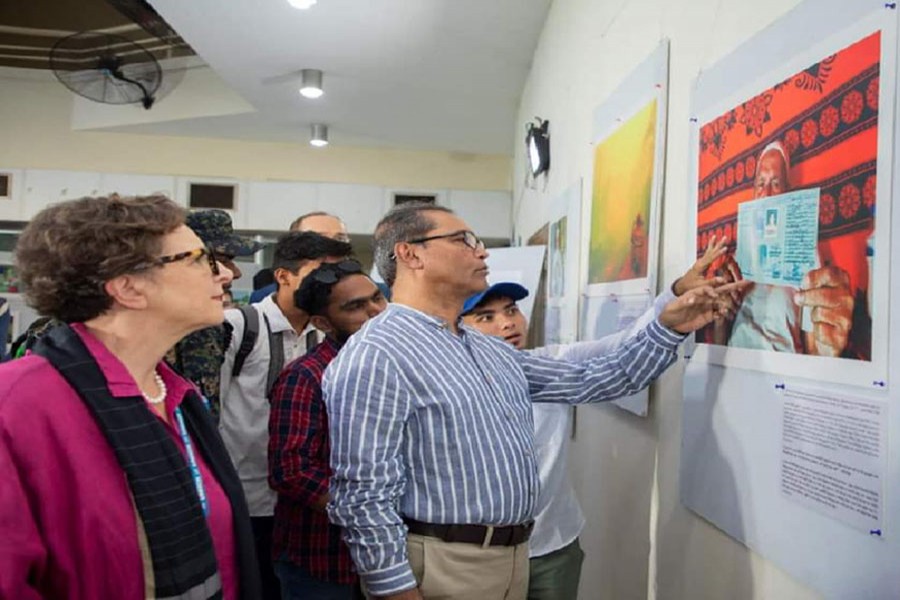UNHCR, the UN Refugee Agency in partnership with the Cox’s Bazar Art Club, has launched a two-week photo exhibition called ‘Aara Rohingya’ or ‘We are Rohingya’, showcasing photos taken by ten Rohingya refugees and allowing for an intimate look into what life is like for people living in the largest refugee camp in the world.
The exhibition that began on Thursday and it will run till September 14 at the Cox’s Bazar Cultural Center, reports UNB.
Based on the Rohingyatographer magazine, the exhibit allows visitors to learn more about the individuals who have found refuge in Bangladesh, after fleeing violence and persecution in Myanmar five years ago.
“Through photography, Rohingya youth are telling their stories and document their collective memory and cultural heritage. The exhibit also shows how they lived memories of millions of Bangladeshis who were uprooted during the Liberation War inspired their generosity to host the persecuted Rohingya from neighbouring Myanmar.” says Johannes van der Klaauw, UNHCR Representative in Bangladesh.
Curated by David Palazón and Amena Khatun from the Liberation War Museum, this photographic exhibit explores themes of memory, hope, dreams, faith, beauty, craftsmanship, grief, loss, and love among the Rohingya refugee through 50 photographs. Additionally, 11 photographs from the Liberation War Museum archives have generously been included, showing the lives and stories of Bangladeshis, who in 1971 were forced to flee and live as refugees, during the Liberation War of Bangladesh.
More than 50 per cent of Rohingya refugees in Bangladesh are youth. They have been living for more than five years in temporary shelters with limited access to education and skills development. Amidst the harsh conditions in the camps, art and photography are for them a mode of expression, to deal with emotions and feelings in a positive way and ease the pain. By painting or taking photographs they are also keeping their culture and history alive, as they mostly focus on documenting their community’s daily lives.
Some of the Rohingya refugee photographers were present, and the audience had the chance to learn more about their lives.


